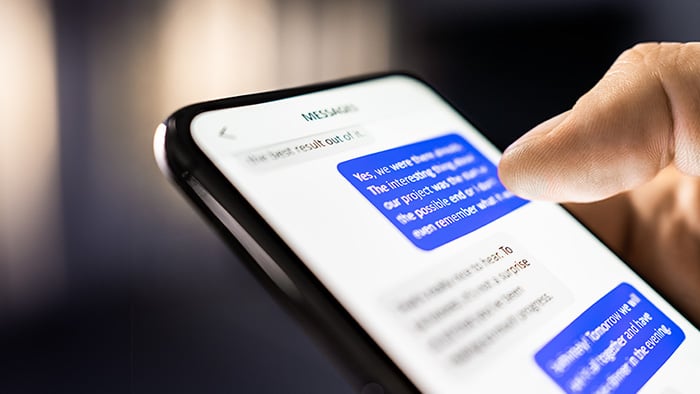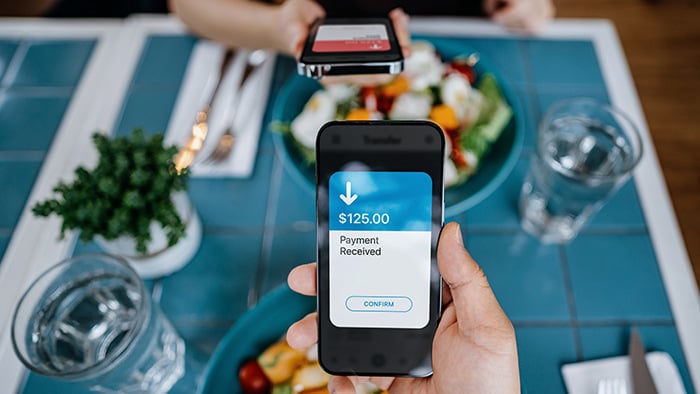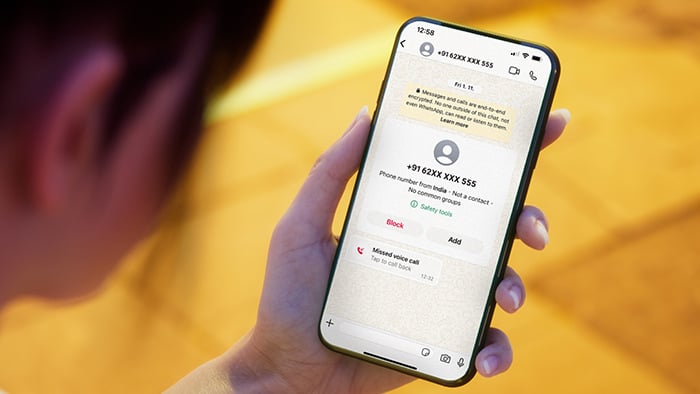Amazon’s popularity makes it an ideal target for scammers, and new Amazon scams are constantly popping up. As we explore common Amazon scams, you’ll notice that most share certain themes. That will help you learn how to spot them and how to prevent yourself from becoming a victim.
The most common Amazon scams
Common Amazon scams try to fool you by setting up fraudulent Amazon websites or sending you fake Amazon emails. Scammers are masters of social engineering tricks, and they can masquerade as fake Amazon customer service representatives to convince you to give out personal information or sensitive data.
Many Amazon scams involve sending out fake, phishing emails to try to lure you into clicking on links to fake websites that will harvest your data. These emails often bait you by saying you’ve won some reward or been given some prize.
Amazon Prime scams
Amazon’s video streaming service is a target for fraud, particularly around Amazon Prime Day, when deals and discounts abound for Prime members.
Here are some of the forms Amazon Prime scams can take:
Prime Day promotions
Amazon Prime members expect to receive promotions from Amazon around Prime Day, and Amazon Prime Day scams take advantage of that. In this scam, Prime members receive text messages from scammers that advertise deals. But the links in these texts or emails go to spoofed websites that can steal personal data or payment information.
Payment issues
Users receive an email or text message — often with a fake IP address purporting to be from Amazon — informing them that they need to update their payment information for their Amazon Prime account. This is a common Amazon scam with many variations.
Activation problems
When Prime members experience difficulty with Amazon Prime content, they often go to Google to find the solution. One Amazon Prime scam posts a fake phone number on a convincing scam website. When the user thinks they’re calling Amazon Prime support, the scammer tries to trick them into paying to activate their Amazon Prime account.

Amazon phishing scams
Amazon phishing scams often use graphics and other design elements similar to real Amazon emails, making these types of scams easy to fall for. Amazon phishing emails come in several forms, and often include a link to a spoofed website where the victim is prompted to make a payment or enter personal details.
Here are the most common types of messages you'll see in Amazon phishing emails:
Update payment information
Update payment information emails try to convince people that their Amazon payment information needs to be updated or has expired.
You’ve won!
Some Amazon phishing scams dangle a prize in front of victims to trick them into clicking a link to a spoofed Amazon website.
Order confirmation
Order confirmation scams happen when customers receive an email or text message with an infected link asking them to verify a recent purchase.

Amazon gift card scams
Requesting an Amazon gift card as a form of payment is a common scam that pressures the victim into purchasing an Amazon gift card and then disclosing the gift card number to the scammer. Here’s how Amazon gift card scams often start:
Urgent assistance
The scammer impersonates a friend or family member asking for urgent help in the form of an Amazon gift card.
Tech support
In this type of Amazon scam, a person pretending to be an Amazon tech support agent convinces the victim that they need to upgrade a plan or purchase a service, using an Amazon gift card as payment.
Survey reward
Scammers offer Amazon gift cards as a reward in return for filling in a survey. They collect sensitive personal information in the survey responses.
Debt payment
Victims usually receive a call claiming they have an unpaid debt — such as a tax penalty — and asking them to pay it using an Amazon gift card.
Outside of purchasing products on the real Amazon website, any individual asking for payment using an Amazon gift card is not legitimate. If you’re unsure if a text or email about an Amazon gift card is real, check the phone number and registration link. Real Amazon gift cards come from the number 455-72, and the registration link should include amazon[dot]com/g/ followed by the claim code.
Fake Amazon websites
Many Amazon scam messages contain links to web pages imitating the real thing. These pharming sites have nearly-undetectable differences from the real Amazon site, making victims think they can safely make purchases and enter payment information.
Purchases made on fake Amazon websites won’t be delivered once money has changed hands — always verify a website's safety and authenticity before making a purchase.
 Verify that the Amazon site you’re using is the real deal.
Verify that the Amazon site you’re using is the real deal.
Customers may also find fake Amazon websites via a Google search. When troubleshooting an Amazon tech support question or searching for something like “Amazon Prime Day deals,” it’s possible to stumble on fake Amazon websites set up to scam unsuspecting customers.
Fake phone calls from Amazon
Phone scammers use scare tactics or a sense of urgency to trick victims into making a payment. The scammer tells the victim that there’s been suspicious activity on their account and they need login or payment details to confirm activity.
Some subtle Amazon phone scams lead the victim into initiating the phone call. Fake websites give customers a fraudulent Amazon helpline to call, then the scammer tricks customers into signing up for a new plan or providing payment details to activate a fraudulent account.
Identifying a fake Amazon phone call can be tricky, because some callers are able to spoof their phone numbers. Treat any phone call claiming to be from Amazon with caution. While some Amazon departments do make phone calls to customers, a legitimate phone call from Amazon won’t require you to disclose sensitive information or verify personal data. Any issues with an Amazon account will be flagged directly in your account.
Fake Amazon tech support scams
Amazon tech support scams are often part of a fake email or phone call scam. A scam Amazon support email informs the victim that there’s a problem with their account, which prompts them to call a fake tech support number. The scammer then asks for account verification in order to trick the victim into disclosing account details.
Fake Amazon tech support callers can also trick a victim into granting remote access to their computer in order to fix a problem. When they get access, these scammers try to install spyware, ransomware, or other malware. To protect yourself against Amazon tech support scams, don’t trust unsolicited tech advice and install a malware removal tool to protect your computer against malicious downloads.
 Amazon tech support scammers ask for remote device access to fix fake problems.
Amazon tech support scammers ask for remote device access to fix fake problems.
Failed delivery scams on Amazon
Failed delivery and item dispatch scams are directed toward Amazon sellers rather than Amazon customers. The person who ordered the goods fraudulently claims they didn’t receive their purchase, asking for a refund or for a second package to be dispatched. This is a relatively old scam but one that Amazon sellers should be aware of.
Fake prize scams on Amazon
Scammers often use email or text messages to inform a recipient that they’ve won a prize. The message typically includes an infected link or leads to a survey that the recipient must complete to claim their prize. The survey then tricks the victim into providing the scammer with sensitive information.
How to protect yourself from Amazon scams
Despite the numerous scams out there, it’s easy to learn how to identify Amazon scams. Here’s how to protect yourself against Amazon scams:
-
Never provide personal information on the phone.
Amazon won’t ask you for any personal details on the phone. If the caller presents you with alarming information regarding unfamiliar orders, expired payment information, or suspicious activity, verify the claim directly in your Amazon account.
-
Always check URLs when visiting websites.
Even if “Amazon” is in the URL, it may not be a legitimate Amazon website. To verify that it’s the real thing, check that there’s a dot before the “amazon.com,” such as “aws.amazon.com.”
-
Don’t click links in suspicious emails.
Go directly to your Amazon account to verify information, check your order status, or update payment information. You should also check the email address to verify the email is really from Amazon.
-
If it seems too good to be true, it probably is.
Be wary of any suspicious bargains, and check the email address or web URL to verify that everything is legit. If in doubt, delete the email or text and don’t click any links.
-
Use different passwords for all your accounts.
Create strong and unique passwords and never disclose your account details to anyone. It’s also important to change your passwords periodically.
-
Don’t pay individuals with a gift card.
Amazon gift cards should only be used to make purchases directly on the Amazon website, and you should never give the gift card code to a third party.
-
Don’t buy from a third-party website.
Don’t click any links that direct you to a third-party website, and always verify the URL before making a purchase or entering payment information. Use caution when dealing with third-party sellers on Amazon.
-
Install antivirus software.
Some Amazon scams can result in your computer getting infected with malware that compromises your data. Install a free antivirus tool aimed to stop any malicious files, downloads, and websites from infecting your device.
-
Use 2FA to log in to your accounts.
Two-factor authentication (2FA) is a safer, more secure way to log in. It can also prevent scammers from signing in to your account even if they have your login details as a result of a data breach.
If you suspect you’re a victim of an Amazon scam, you can report the scam to Amazon. Or, contact the Federal Trade Commission in case the scam has led to identity theft.
Get powerful protection against online scams
Amazon scams are far from the only danger lurking online. Installing all-encompassing cybersecurity software — such as Avast One — can nip scams in the bud while protecting you from a host of other threats.
By blocking viruses and malware, weeding out scam emails and phishing attacks, and providing extra security so you can shop online safely, Avast One helps you ward off scams and the complications that come with them. Install it for free today.





 Verify that the Amazon site you’re using is the real deal.
Verify that the Amazon site you’re using is the real deal. Amazon tech support scammers ask for remote device access to fix fake problems.
Amazon tech support scammers ask for remote device access to fix fake problems.










